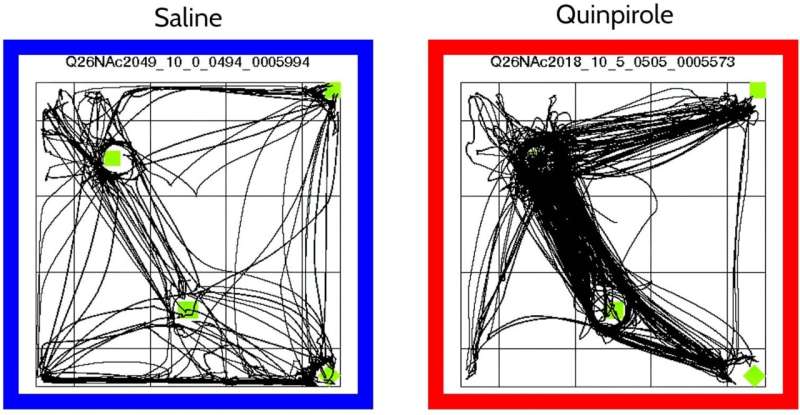Exploring obsessive-compulsive disorder in an animal model

A study published today in the journal GigaScience provides an enormous amount of behavioral data, presented in a detailed videographic virtual library, that was used to explore obsessive-compulsive disorder (OCD) in an animal model. With OCD affecting between 1% and 3% of the general population, and some recent data suggesting that COVID-19 may promote OCD-like behaviors, such a large amount of behavioral data from a model organism serves as an incredible resource for use by the scientific community.
This research was carried out by a team led by Henry Szechtman from McMaster University in Canada. This new data set is the culmination of a 15-year study and constitutes 11.1 TB of data from over two years of continuous recording, which is enormous given that the current availability of recorded sharable data is nearly zero. The entire set of data is openly available in Federated Research Data Repository (FRDR) with the complete metadata and data links available in GigaScience journal's affiliated database GigaDB.
Obsessive-compulsive disorder (OCD) is characterized by obsessive thoughts and compulsive behaviors, such as incessant washing and cleaning, that can completely interfere with regular daily activities to the point they become incapacitating. Over 50% of individuals with OCD experience severe impairment and 85% experience moderate to severe impairment.
The complexity of the disease, given that there is both genetic and environmental components, makes animal models essential for gaining a deeper understanding of the neurobiology of this condition, as well as for providing insights into the mechanisms of the disease and potential treatments. The model used in this study involved testing rats with OCD behaviors by assessing their behavioral performance in a widely used apparatus—a large open field—and recording their behavioral activity in a standardized paradigm under regulated conditions.
The library of data provided in this study includes the entire set of raw videos of each trial, as well as two video-derived raw data objects, namely, XY locomotion coordinates and plots of animal trajectory. The information from the raw data objects is especially informative, as treatment with drugs or brain lesions are shown to transform the pattern of locomotion of this animal OCD model in both space and time. Having these data openly available to the scientific community allows other researchers to use the data in ways that can go far beyond what the investigators tested in their original research studies.
First author Henry Szechtman, said, "The reuse potential of the virtual library is even greater because of videography: the virtual library contains not only the digitized coordinates of locomotion in the open field (from which measures of compulsive checking and the amount of activity can be derived) but also the video record of rat's activity in the open field. These video recordings constitute the full documentation of the animal behavior in the predefined environment. As such, they have information beyond the paths of locomotion that were of interest in our experiments."
In the 43 experiments, the model behaviors were assessed using, singly or in combination, 9 different drugs as potential treatments for OCD. A subset of these experiments also incorporated a surgical procedure to lesion specific parts of the brain that have been implicated as being integral to the neurophysiology of OCD. Additional subsets of these experiments assessed behavioral changes in the rats when exposed to differing environmental factors, such as the influence of darkness, or the influence of a small ledge, or no objects, in the open field. All of these different tests provide a rich coverage of information for OCD research.
While the data in this study were assessed by humans, this resource can be used in the growing area of machine learning for complex analyses. Szechtman says, "This vast number of records allows utilization of machine learning/artificial intelligence algorithms. For example, these algorithms can be utilized to predict the escalation of compulsive checking in animals treated with different drugs, and the decline in exploratory behavior of control animals, as well as to identify the range of unique patterns of escalation and decline across individual rats and types of treatments. Other questions can involve examination and prediction of activity patterns; evolution of the places of focus in the environment during development of compulsive checking or as a function of different treatments; identification of outlier cases and predictor variables."
Taken together, these data comprise one of the largest sets of documentation of OCD behavioral information in an animal model. The open availability of such detailed information on a range of analyses and tests serves as an invaluable resource to the community at large for understanding OCD type behaviors and the potential changes different medical treatments can provide.
More information: Henry Szechtman et al, A virtual library for behavioral performance in standard conditions—rodent spontaneous activity in an open field during repeated testing and after treatment with drugs or brain lesions, GigaScience (2022). DOI: 10.1093/gigascience/giac092




















